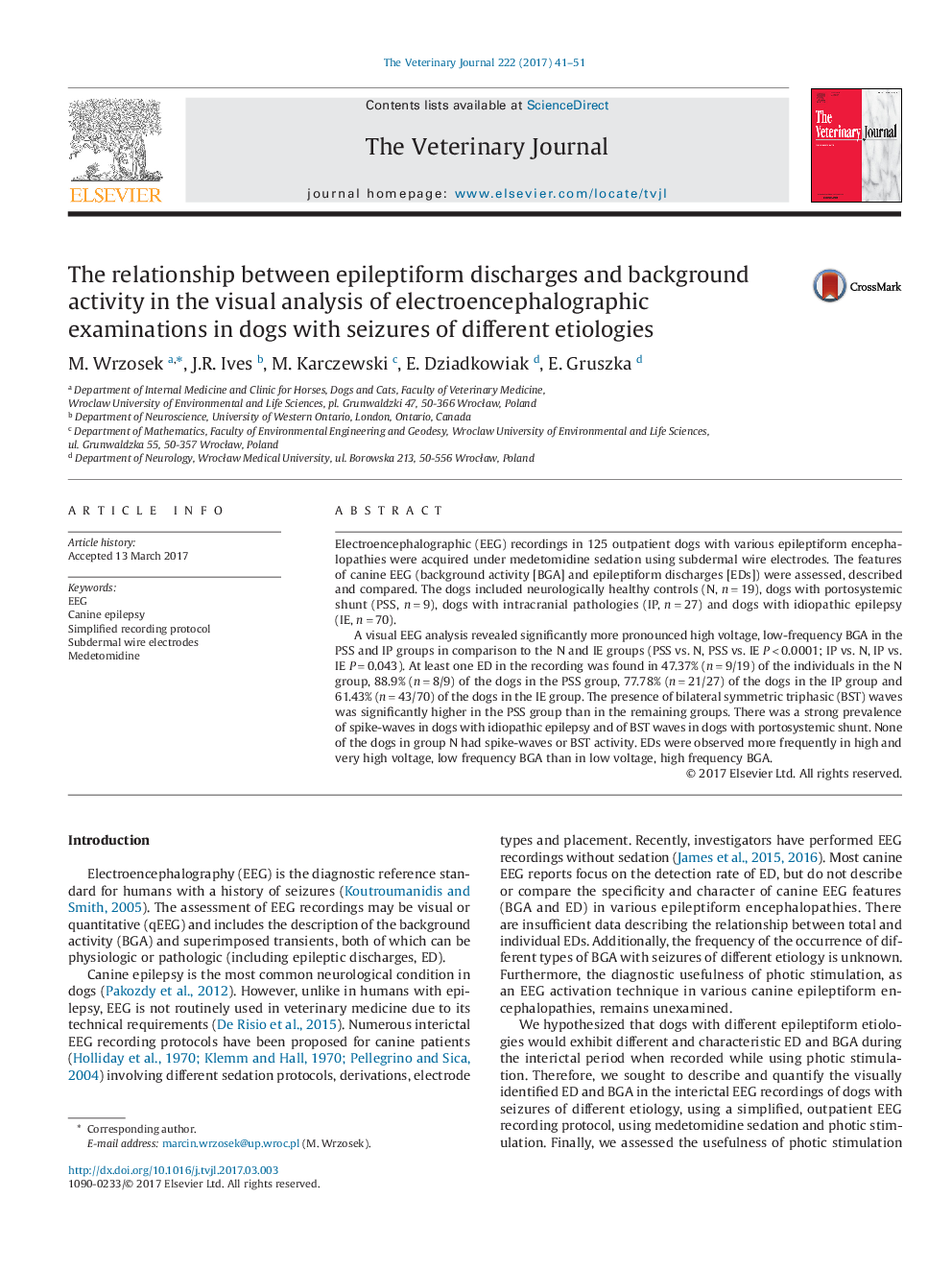| Article ID | Journal | Published Year | Pages | File Type |
|---|---|---|---|---|
| 5544898 | The Veterinary Journal | 2017 | 11 Pages |
Abstract
A visual EEG analysis revealed significantly more pronounced high voltage, low-frequency BGA in the PSS and IP groups in comparison to the N and IE groups (PSS vs. N, PSS vs. IE Pâ<0.0001; IP vs. N, IP vs. IE Pâ=â0.043). At least one ED in the recording was found in 47.37% (nâ=â9/19) of the individuals in the N group, 88.9% (nâ=â8/9) of the dogs in the PSS group, 77.78% (nâ=â21/27) of the dogs in the IP group and 61.43% (nâ=â43/70) of the dogs in the IE group. The presence of bilateral symmetric triphasic (BST) waves was significantly higher in the PSS group than in the remaining groups. There was a strong prevalence of spike-waves in dogs with idiopathic epilepsy and of BST waves in dogs with portosystemic shunt. None of the dogs in group N had spike-waves or BST activity. EDs were observed more frequently in high and very high voltage, low frequency BGA than in low voltage, high frequency BGA.
Keywords
Related Topics
Life Sciences
Agricultural and Biological Sciences
Animal Science and Zoology
Authors
M. Wrzosek, J.R. Ives, M. Karczewski, E. Dziadkowiak, E. Gruszka,
